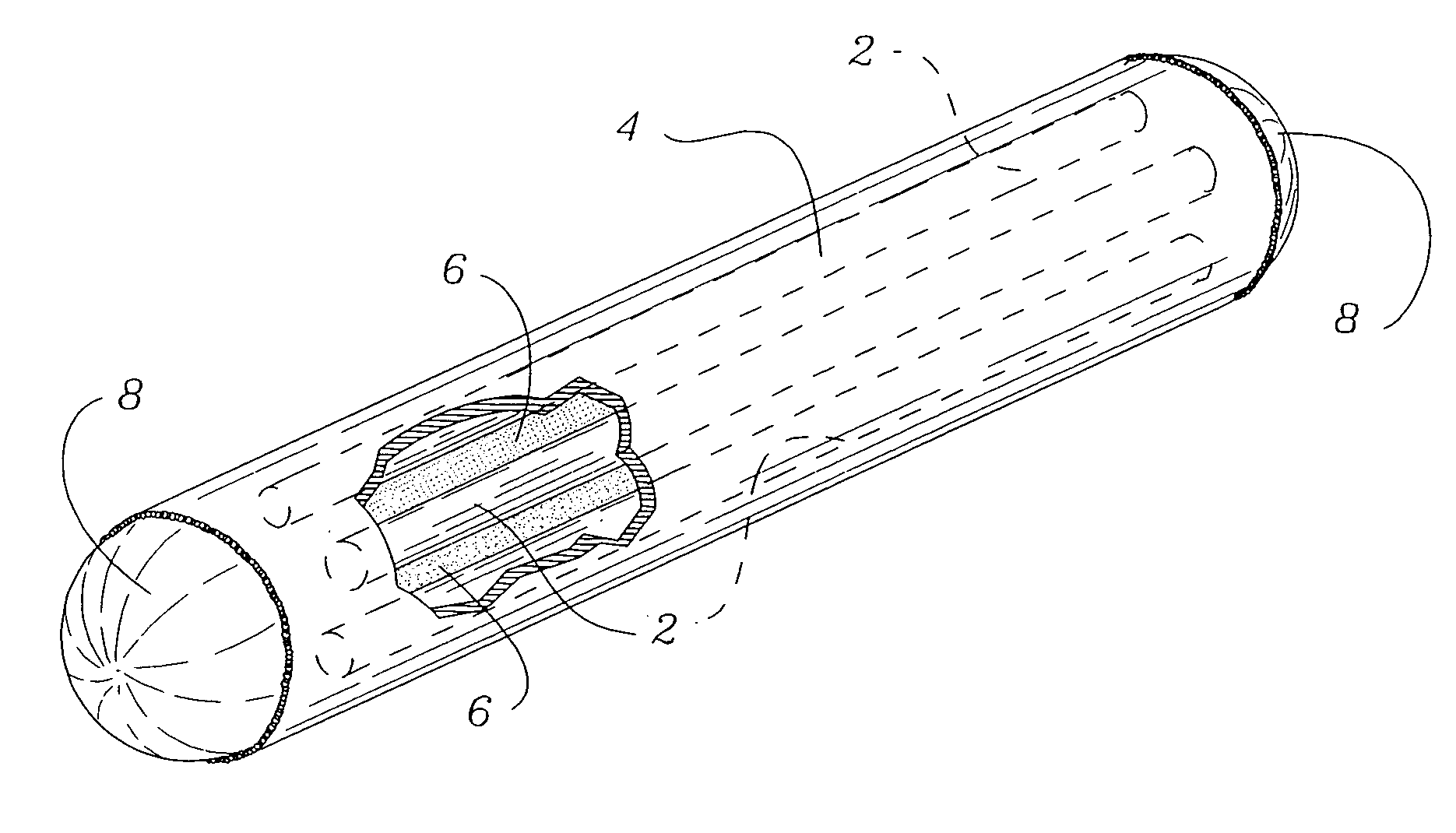Aluminum-silicon diffusion coated alloy products
- Summary
- Abstract
- Description
- Claims
- Application Information
AI Technical Summary
Benefits of technology
Problems solved by technology
Method used
Image
Examples
example 1
[0013] Type 1018 carbon steel, type 304 austenitic stainless steel, and Alloy 800 (iron-base superalloy) samples were simultaneously diffusion coated with aluminum-silicon in a pack cementation process. The pack composition consisted of 4 wt. % aluminum, 0.5 wt. % silicon, 0.5 wt. % ammonium chloride, and 95 wt. % aluminum oxide. The process was conducted in a hermetically sealed carbon steel retort. The process consisted of heating the retort in a furnace at a temperature ranging from 1500° F.-1800° F. for 5 hours.
[0014] The diffusion coated samples were examined by standard metallographic techniques. The type 1018 carbon steel sample exhibited an average diffusion zone thickness of approximately 300 microns with no porosity and minimal grain boundary formation running perpendicular to the diffusion zone surface. Scanning electron microscopy / energy dispersive spectrometric measurements indicated a composition including 36.7 wt. % aluminum and 0.3 wt. % silicon at the diffusion zon...
example 2
[0015] Samples of a 98 wt. % copper-2 wt. % beryllium alloy were simultaneously diffusion coated with aluminum-silicon in a pack cementation process. The pack composition consisted of 4 wt. % aluminum, 1 wt. % silicon, 1.5 wt. % ammonium chloride, and 93.5 wt. % aluminum oxide. The process was conducted in a hermetically sealed carbon steel retort. The process consisted of heating the retort in a furnace at a temperature ranging from 1470° F.-1500° F. for 5 hours.
[0016] The diffusion coated samples were examined by standard metallographic techniques. The copper-beryllium samples exhibited an average diffusion zone thickness of approximately 150 microns, ranging between 100 and 200 microns, with no porosity and minimal grain boundary formation running perpendicular to the diffusion zone surface. As this alloy is used for an erosive / wear environment, hardness measurements of the diffusion zone surface were obtained. The average hardness of the diffusion zone surface was found to be 6...
PUM
| Property | Measurement | Unit |
|---|---|---|
| Temperature | aaaaa | aaaaa |
| Length | aaaaa | aaaaa |
| Fraction | aaaaa | aaaaa |
Abstract
Description
Claims
Application Information
 Login to View More
Login to View More - R&D
- Intellectual Property
- Life Sciences
- Materials
- Tech Scout
- Unparalleled Data Quality
- Higher Quality Content
- 60% Fewer Hallucinations
Browse by: Latest US Patents, China's latest patents, Technical Efficacy Thesaurus, Application Domain, Technology Topic, Popular Technical Reports.
© 2025 PatSnap. All rights reserved.Legal|Privacy policy|Modern Slavery Act Transparency Statement|Sitemap|About US| Contact US: help@patsnap.com


